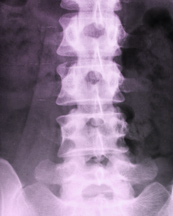What is the Recovery Process for a Person Who Undergoes Sacroiliac Joint Fusion?

As we’ve highlighted in recent blogs, sacroiliitis is a painful and potentially debilitating condition centered in the sacroiliac joint, which connects the pelvis to the spinal column. In the past, patients with mild to severe cases who didn’t respond to conservative sacroiliitis treatments faced the daunting prospect of conventional surgery on the sacroiliac joint, a complex procedure requiring an extended and uncertain recovery period. But now these patients have a new surgical option: minimally invasive sacroiliac joint fusion. This surgical solution, exemplified by the iFuse System, can be performed using only percutaneous, or small incisions, not only greatly reducing the time required for the surgery, but also making recovery much faster and easier. Here are some basic facts about recovery from one particular sacroiliac joint fusion procedure and technique, the iFuse System, that any prospective surgical candidate should know.
Details About the Recovery Process
Remarkably, following sacroiliac joint fusion, patients often feel comfortable enough to return home the same day as their surgical procedure. For the first 6 weeks after the sacroiliitis surgery, the use of crutches or a walker is recommended to protect weight bearing on the side of the spine on which the procedure was performed. Once use of these walking aides is no longer necessary, patients typically enroll in a course of physical therapy under the guidance of a certified physical therapist. Physical therapy will include more passive measures for the first few weeks followed by a more active rehabilitative exercise program. Passive treatments that a therapist may utilize include heat and ice, electrical stimulation, ultrasound, and massage. As strength is regained, the patient begins a regimen of strengthening exercises. Resumption of normal activities will be approved by the physician and therapist as the rehabilitation proceeds. The ultimate goal is to resume a normal level of function with minimal discomfort. Based on recovery, progress, and occupation, the surgeon will advise the patient on when he or she can resume an increased level of activity and return to work.
The time to fully recover from this treatment for sacroiliitis varies from patient to patient, but most patients have recovered fully from this minimally invasive surgery within six months.






